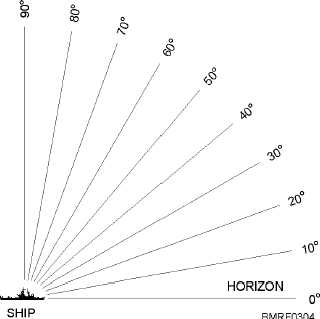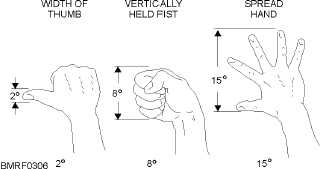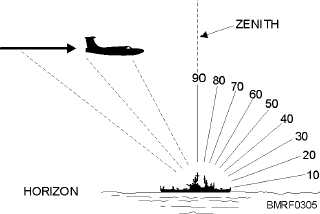REPORTING POSITION ANGLE
An object located in the sky is reported by its
bearing and position angle. The position angle of an
aircraft is its height (in degrees) above the horizon as
seen from the ship. The horizon is 0° and directly
overhead is 90°. A position angle can never be more
than 90°, as shown in figure 3-4. Position angles are
reported in one or two digits and spoken as a
whole—not digit by digit.
Position angles should be reported on all aircraft.
Look at figure 3-5. As the aircraft approaches the ship,
the position angle increases. Whenever the position
angle changes significantly, all stations should be
informed. To help you more accurately determine an
aircraft’s position angle, you can use the aids shown in
figure 3-6. The width of the thumb between the horizon
and the aircraft is approximately 2°; the width of the
closed fist, approximately 8°; and the open hand,
approximately 15° (at arm’s length).
REPORTING RANGES
Most of the time, if you give reasonably good
bearings and position angles when reporting contacts,
the OOD will have little difficulty in locating them. But
suppose you sight a submarine periscope, a person, or
some other object low in the water. In these instances,
you can save valuable time by reporting the object’s
approximate distance. Ranges are always reported in
yards. Estimating distances over water is difficult for the
inexperienced lookout. Distances can be very
deceptive.
3-15
Student Notes:
Figure 3-4.—Position angle.
Figure 3-6.—Position angle aids.
Figure 3-5.—Position angle.





